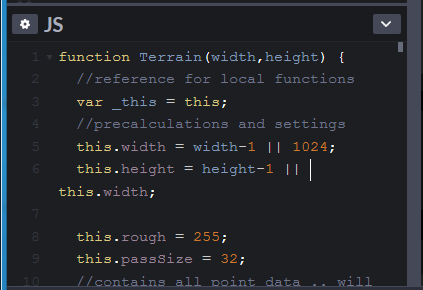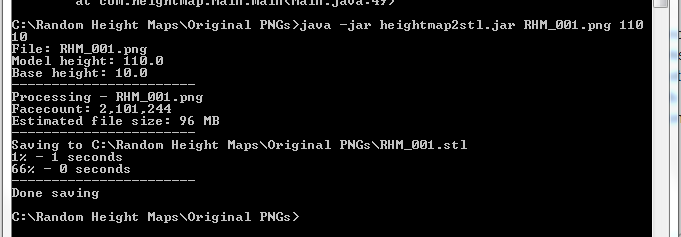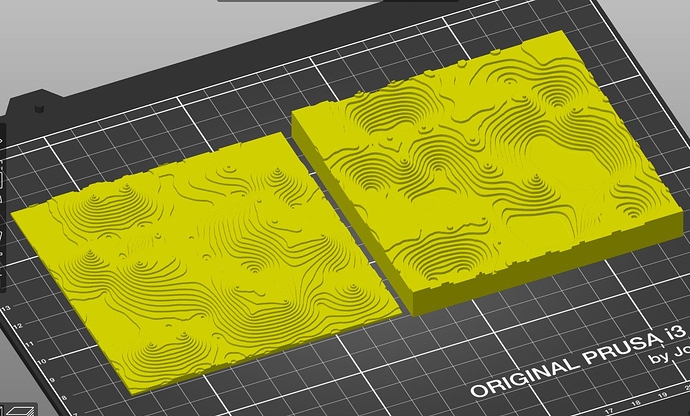I started playing around with this site that @Julien linked in his first post and started playing with the idea of making some coasters using those generated gray scale maps. I did not like the low resolution of the maps, or the border and crosshairs, so I forked the program and just edited out the stuff I didn’t want, and then increased the size from 512 x 512 to 1024 x 1024. Here’s that version if anyone is interested. If you want to make the map bigger, just go to the JS window

and edit the line:
5 this.width = width-1 || 1024;
By replacing the 1024 with whatever you want. EDIT: You’ll have to log in and fork it to work properly after changing the value. Sorry, I forgot. I know just enough to be dangerous.
I found a simple Java program on Thingiverse that once you follow the instructions installing Java and modifying the path, you just use the DOS command window (CMD) and the command:
java -jar heightmap2stl.jar ‘path to imagefile’ ‘height of model’ ‘height of base’
I created a directory 'C:\Random Height Maps. Then I put all my images in there. Don’t use spaces in the file name (directory name is fine though), the Java program doesn’t like it.
RHM_001.png
RHM_002.png
. . .
RHM_030.png
Then I put the ‘heightmap2stl.jar’ program in the same folder as my pictures. Then I ran the dos command window (CMD) and navigated to that folder and entered:
‘java -jar heightmap2stl.jar RHM_001.png 110 10’

Then it generates the STL from that image file. To do the next one is even easier.
- Hit ‘F3’, which brings up your last command
- Use left arrow to go back to the ‘1’ and use backspace to delete it and put in a ‘2’
- Hit enter, and it generated the STL for RHM_002
- Hit ‘F3’. . . .
I processed 30 height maps in about 10 minutes like this.
Repeat that for all the gray scale height maps you created.
Then I used FastStone Image Viewer to create negatives of the original images with the batch command, and it processed all 30 pics in about 30 seconds., then I used the same process to make STLs of those as well.
Then, you get these:
The Java program makes the STLs 1mm per pixel it seems, so they come in at over 1,000mm, but using a proportional resize easily gets them down to a printable (or CNC-able) size easily.
